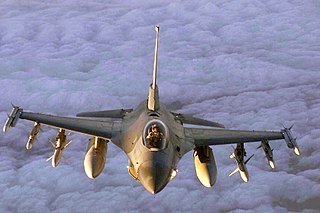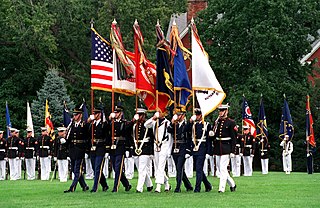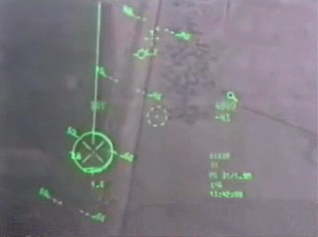 W
WActive United States military aircraft is a list of military aircraft that are used by the United States military. For aircraft no longer in-service see the list of military aircraft of the United States.
 W
WFuture military aircraft of the United States is a list of military aircraft that are being developed for use by the United States military in the near future. For aircraft in-service see List of active United States military aircraft.
 W
WThis list of military aircraft of the United States includes prototype, pre-production, and operational types. For aircraft in service, see the list of active United States military aircraft. Prototypes are normally prefixed with "X" and are often unnamed, while pre-production models are usually prefixed with "Y".
 W
WThis list of military aircraft of the United States (1909–1919) includes prototype, pre-production and operational types operated by the United States Army and United States Navy during the period prior to and during World War I, prior to the establishment of a numerical designation system. During this period, aircraft used by the U.S. military forces were referred to by their manufacturers' designations.
 W
WThis list of military aircraft of the United States (naval) includes prototype, pre-production and operational types designations under the 1922 United States Navy aircraft designation system, which was used by the United States Navy, the United States Marine Corps, and the United States Coast Guard.
 W
WThe United States Armed Forces awards and decorations are primarily the medals, service ribbons, and specific badges which recognize military service and personal accomplishments while a member of the U.S. Armed Forces. Such awards are a means to outwardly display the highlights of a service member's career.
 W
WWorld War I was fought on many fronts around the world from the battlefields of Europe to the far-flung colonies in the Pacific and Africa. While it is most famous for the trench warfare stalemate that existed on Europe's Western Front, in other theatres of combat the fighting was mobile and often involved set-piece battles and cavalry charges. The Eastern Front often took thousands of casualties a day during the major offensive pushes, but it was the West that saw the most concentrated slaughter. It was in the west that the newly industrialized world powers could focus their end products on the military–industrial complex. The deadliest day of the war was during the opening days of the conflict. The Imperial German war council had initiated the Schlieffen Plan which involved multiple armies flooding through the borders of Belgium and France. On August 22, 1914, during the Battle of the Frontiers five separate French armies engaged the German invaders independently of each other. Across all those battlefields, on that single day, 27,000 French soldiers lost their lives protecting their country.
 W
WThe General Pershing WWI casualty list was a list of casualties released to the media by the American military during World War I. Newspapers like the Evening Public Ledger would title the list's summary, General Pershing Reports or Pershing Reports. The name General Pershing refers to General John Pershing, who was in command of the American Expeditionary Forces (AEF), the expeditionary force of the United States during World War I. While fighting the Germans on the Western Front the AEF would take daily casualties in the form of those killed in action (KIA), those who died from their wounds, those who died from disease, accidental deaths, soldiers missing in action (MIA) and soldiers wounded in action (WIA). These numbers would be tabulated by the American military and then released to the American news media.
 W
WThis article contains the list of battles with most United States military fatalities, in terms of American deaths.
 W
WThis is a complete list of four-star admirals in the United States Coast Guard. The rank of admiral is the highest rank in the U.S. Coast Guard. It ranks above vice admiral and below Fleet Admiral.
 W
WThe United States and its preceding colonies built numerous coastal defenses to defend major cities, ports and straits from the colonial era through World War II. Some listed were built by other nations and are now on United States territory.
 W
WList of conflicts in the British America is a timeline of events that includes Indian wars, battles, skirmishes massacres and other related items that occurred in Britain's American territory up to 1783 when British America was formally ended by the Treaty of Paris and replaced by British North America and the United States.
 W
WThis is a list of conflicts in the United States. Conflicts are arranged chronologically from the late modern period to contemporary history. This list includes the following: Indian wars, skirmishes, wars of independence, liberation wars, colonial wars, undeclared wars, proxy wars, territorial disputes, and world wars. Also listed might be any battle that was itself only part of an operation of a campaign of a theater of a war. There may also be periods of violent civil unrest listed, such as: riots, shootouts, spree killings, massacres, terrorist attacks, and civil wars. The list might also contain episodes of: human sacrifice, mass suicide, genocides, and other related items that have occurred within the geographical area of what is today known as, the "United States of America".
 W
WThe several branches of the United States Armed Forces are represented by flags. Within the U.S. military, various flags fly on various occasions, and on various ships, bases, camps, and military academies.
 W
WThis is a list of friendly fire incidents by the U.S. Military on allied British personnel and civilians. The topic has become prevalent in British culture due to some recent incidents, and is often satirically portrayed in the media.
 W
WWhen the United States entered World War I on 6 April 1917, the Air Service of the United States Army existed only as a branch of the Signal Corps, and was known by the name of Aviation Section, U.S. Signal Corps. It consisted of 1,120 personnel, of which 65 were officers. The Army was not ready for the deployment of aviation forces to Europe, and it became necessary to prepare after President Woodrow Wilson's declaration of war.
 W
WThis is the Group G series List of U.S. military vehicles by (Ordnance) supply catalog designation, — one of the alpha-numeric "Standard Nomenclature Lists" (SNL) that were part of the overall List of U.S. Army weapons by supply catalog designation, a Supply Catalog that was used by the U.S. Army Ordnance Department / Ordnance Corps as part of the Ordnance Provision System, from about the mid-1920s to about 1958.
 W
WThe United States Department of Defense (DoD) has a complex organizational structure. It includes the Army, Navy, the Marine Corps, Air Force, Space Force, the Unified combatant commands, U.S. elements of multinational commands, as well as non-combat agencies such as the Defense Intelligence Agency and the National Security Agency. The DoD's annual budget was roughly US$496.1 billion in 2015. This figure is the base amount and does not include the $64.3 billion spent on "War/Non-War Supplementals". Including those items brings the total to $560.6 billion for 2015.
 W
WA premier ensemble is a certain class of military band in the United States armed forces that exist to promote the U.S. military to the public at large, to support state ceremonies, and to preserve the heritage of American martial music. They are configured and commanded so as to attract the highest-quality musicians available, and competition for enlistment is typically fierce. As of 2020 there are eleven such units.
 W
WThis is a list of vehicles used by the U.S. Army Signal Corps from World War I through World War II.
 W
WThe list of V-2 test launches identifies World War II launches of the A4 rocket. Test launches were made at Peenemünde Test Stand VII, Blizna and Tuchola Forest using experimental and production rockets fabricated at Peenemünde and at the Mittelwerk. Post-war launches were conducted at Cuxhaven, White Sands Proving Grounds, Cape Canaveral, Kapustin Yar, and on the USS Midway during Operation Sandy.